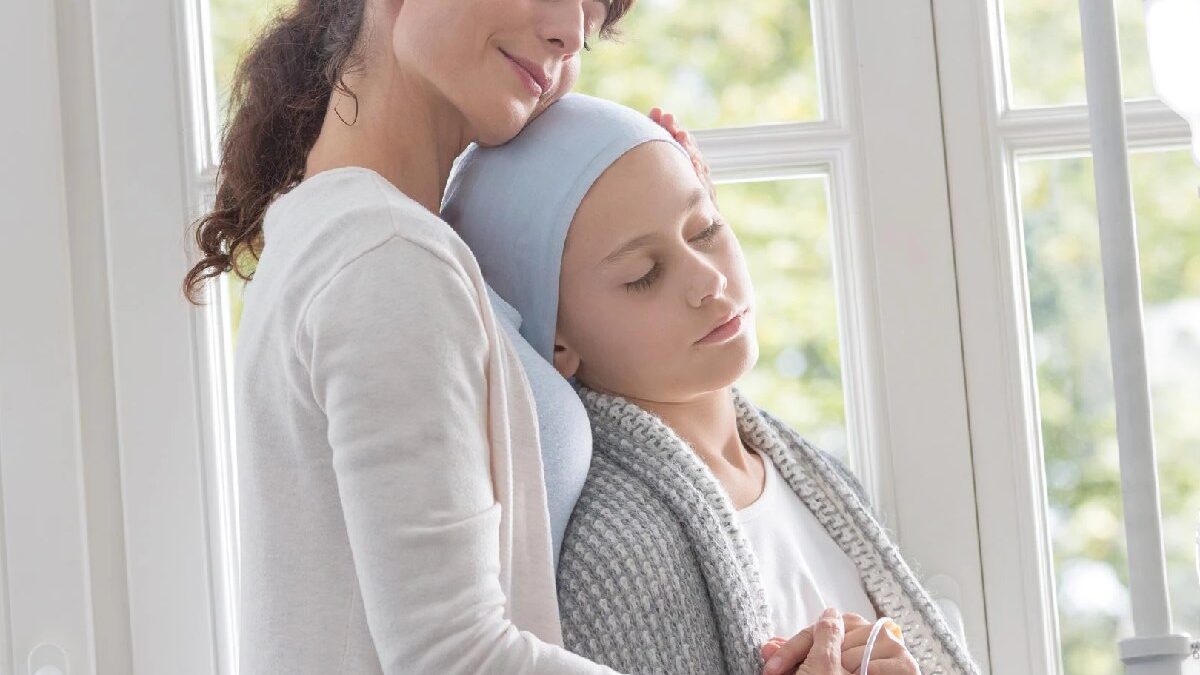Leukemia is a form of blood cancer that can strike children as well as adults. Parents and carers must be familiar with the signs and symptoms because early detection is critical for better treatment outcomes.
This article will go over the common and not-so-common symptoms of leukemia in children.
Table of Contents
Common Symptoms of Childhood Leukemia
While there are many causes for the symptoms listed below, presenting more than two together is a cause for concern. Common symptoms include:
- Fatigue and Weakness: Children with leukemia frequently experience extreme tiredness and weakness. They may find it difficult to participate in activities they once enjoyed or to keep up with their peers.
- Frequent infections: Children with leukemia are more susceptible to infections and illness because their immune systems are weakened. They may catch colds, flu, or other infections more often than others and recover more slowly.
- Fever: Another sign of leukemia is persistent or recurring fever with no apparent cause. Over-the-counter medications may be ineffective in treating these fevers.
- Unexplained Bruising or Bleeding: Children with leukemia may experience unexplained bruises that may appear in unusual places, such as the back or stomach. They may also experience bleeding for no apparent reason, such as nosebleeds or bleeding gums.
- Pain in the Bones and Joints: Because leukemia affects the bone marrow, it can cause pain in the bones and joints. This pain could be misdiagnosed as growing pains or another common childhood complaint.
- Swollen Lymph Nodes: Swollen lymph nodes, especially in the neck, underarms, or groin, can indicate leukemia. They are usually painless and have the appearance of soft, rubbery lumps under the skin.
Less Common Childhood Leukemia Symptoms
While the symptoms listed above are more common, some other signs of childhood leukemia are less common but still worth noting:
- Weight Loss and Appetite Loss: Some children with leukemia may experience unexplained weight loss and appetite loss. They may refuse to eat or be uninterested in food.
- Pale skin: Leukemia can impair the body’s ability to produce red blood cells, resulting in anemia. Pale skin, shortness of breath, and dizziness are some of the symptoms.
- Swollen abdomen: Leukemia cells can accumulate in the liver or spleen, causing these organs to swell. This can cause an enlarged abdomen and discomfort.
- Shortness of breath: Children with leukemia may feel short of breath or have difficulty breathing, especially during regular exercise.
- Skin rashes or petechiae: Petechiae are small, red, pinprick-like spots on the skin that can appear as a result of a low amount of platelets. This can cause rashes and other skin changes.
When Should You Seek Medical Attention?
If your child exhibits any of the above signs and symptoms, you should immediately take them to the doctor. Visit the experts at Moffitt Cancer Center for more information.
While these symptoms can be caused by other diseases, detecting leukemia early is critical for effective treatment.
Conclusion
Recognizing leukemia signs and symptoms in children is critical for early detection and treatment. Although some of these symptoms may be caused by common childhood illnesses, monitoring your child’s health and seeking medical advice if you have any concerns is critical.
Keep in mind that early intervention can significantly improve treatment outcomes. Visit moffitt.org for more information on leukemia and other cancers.

